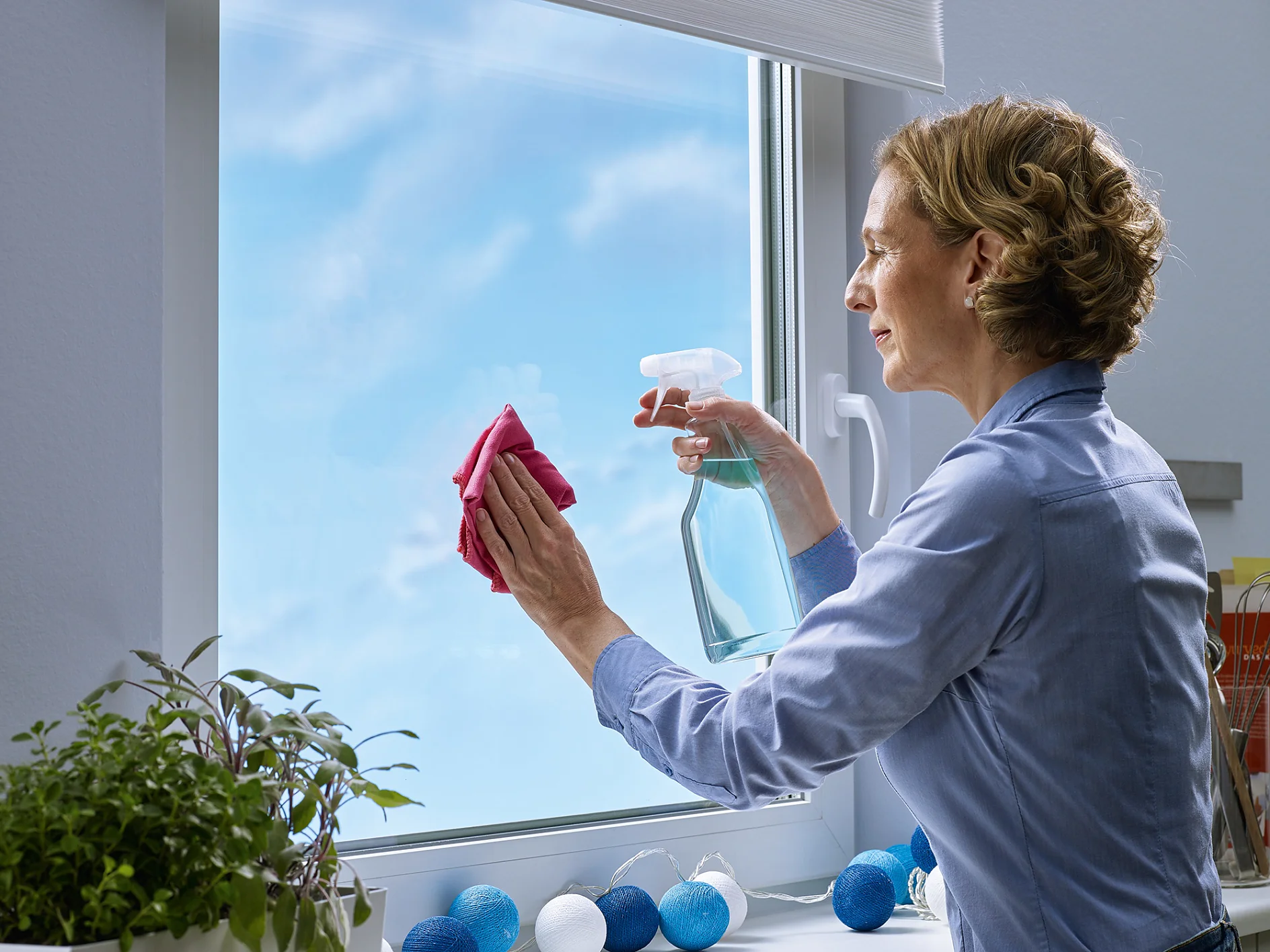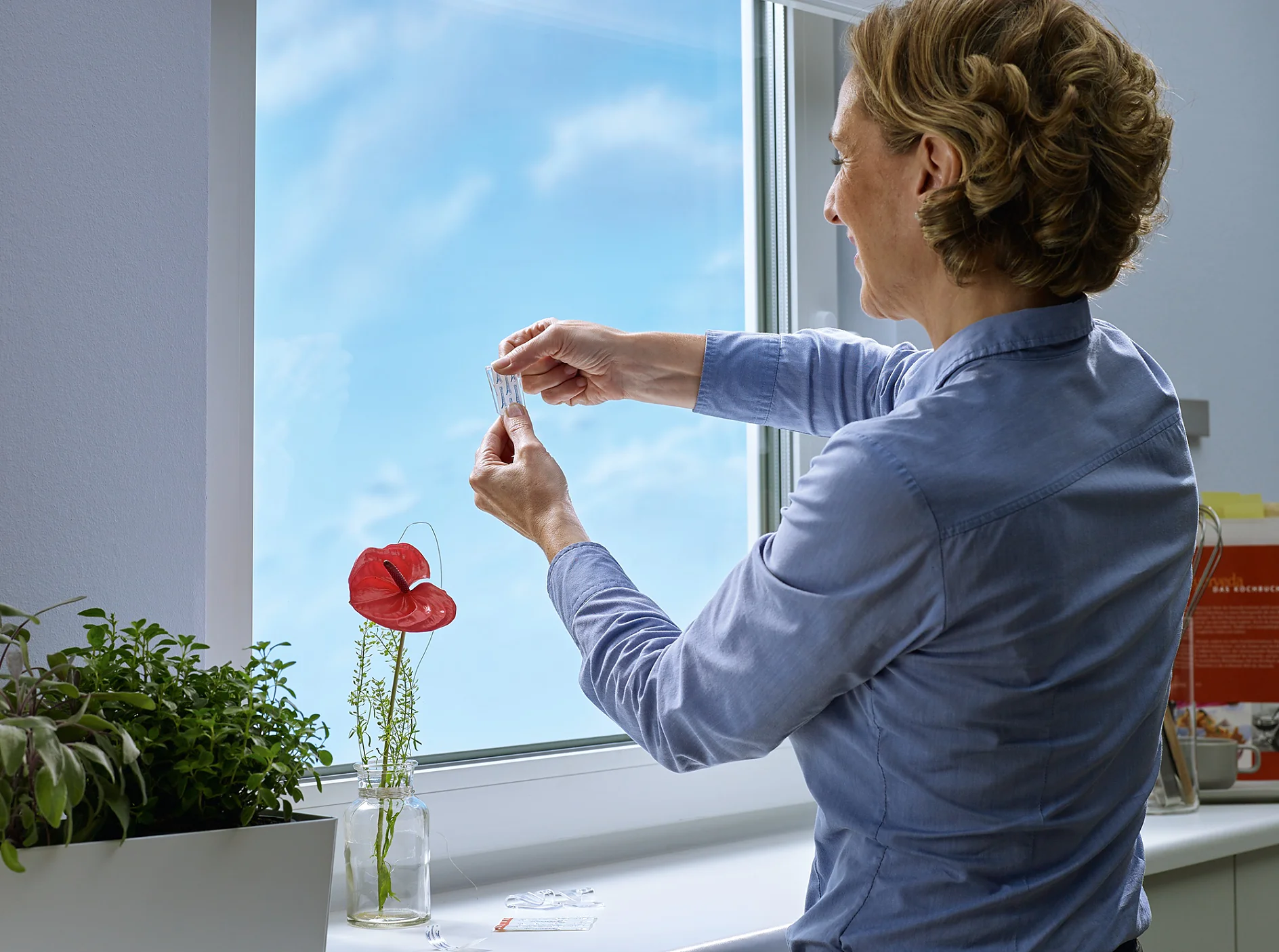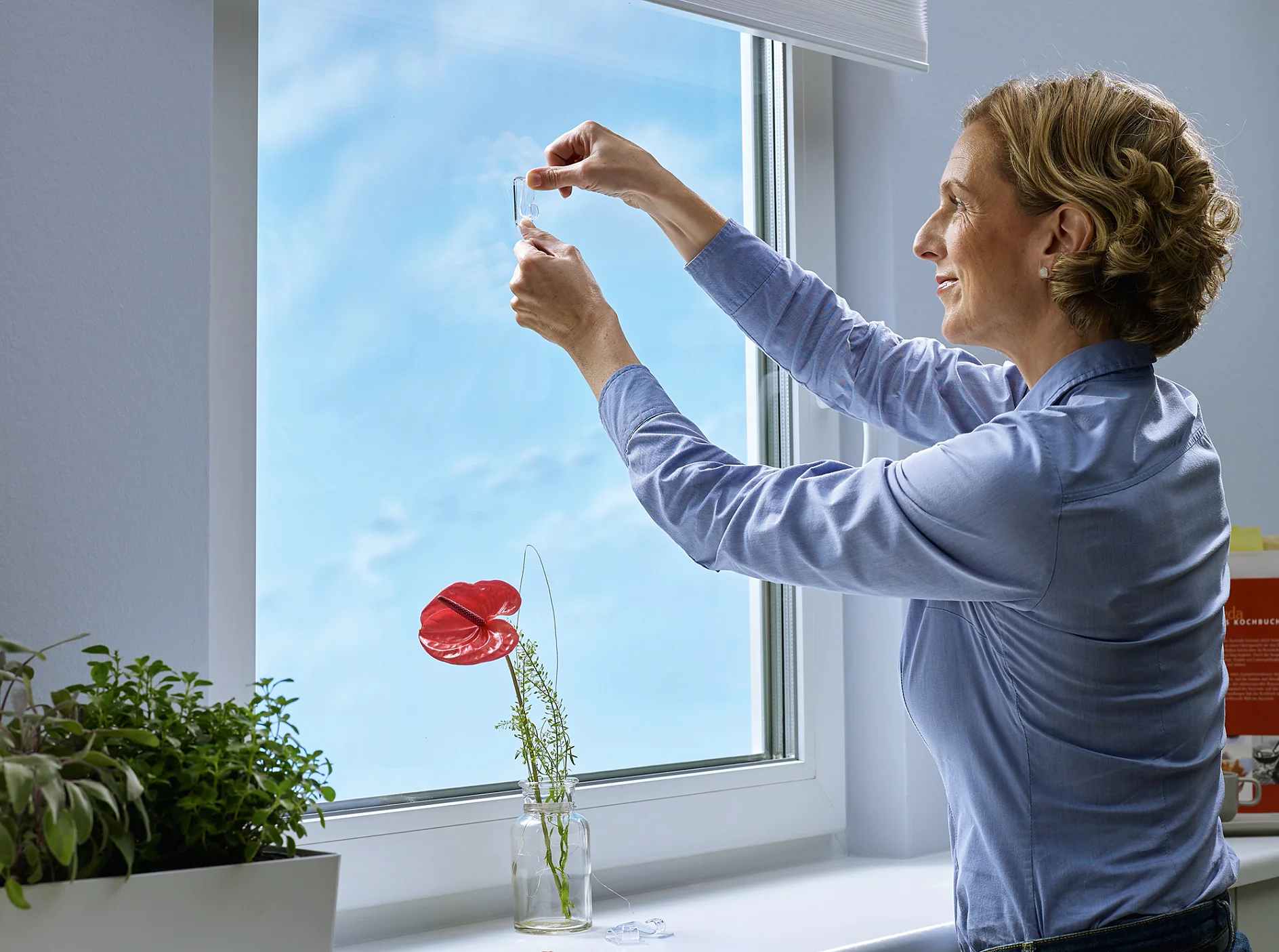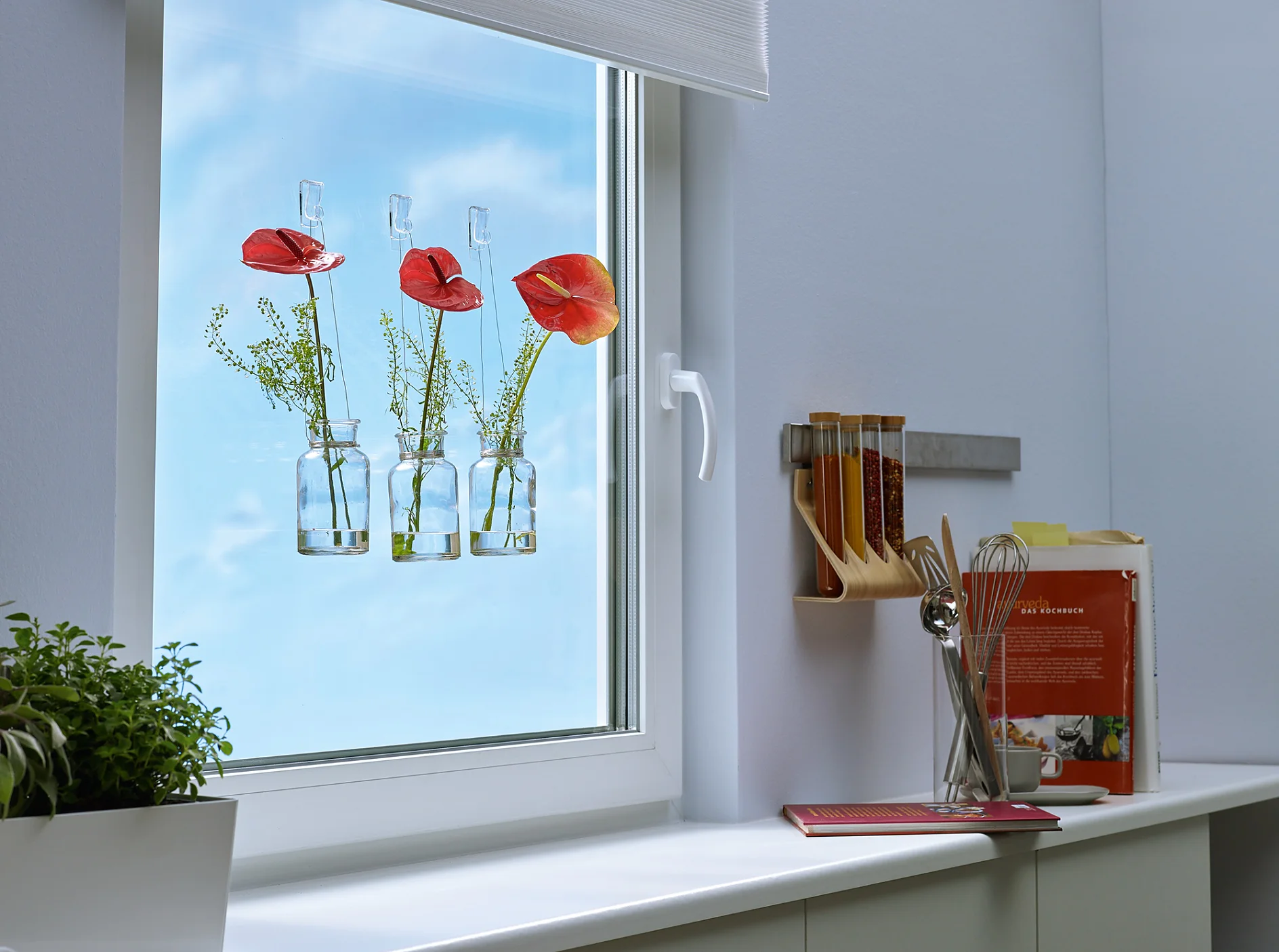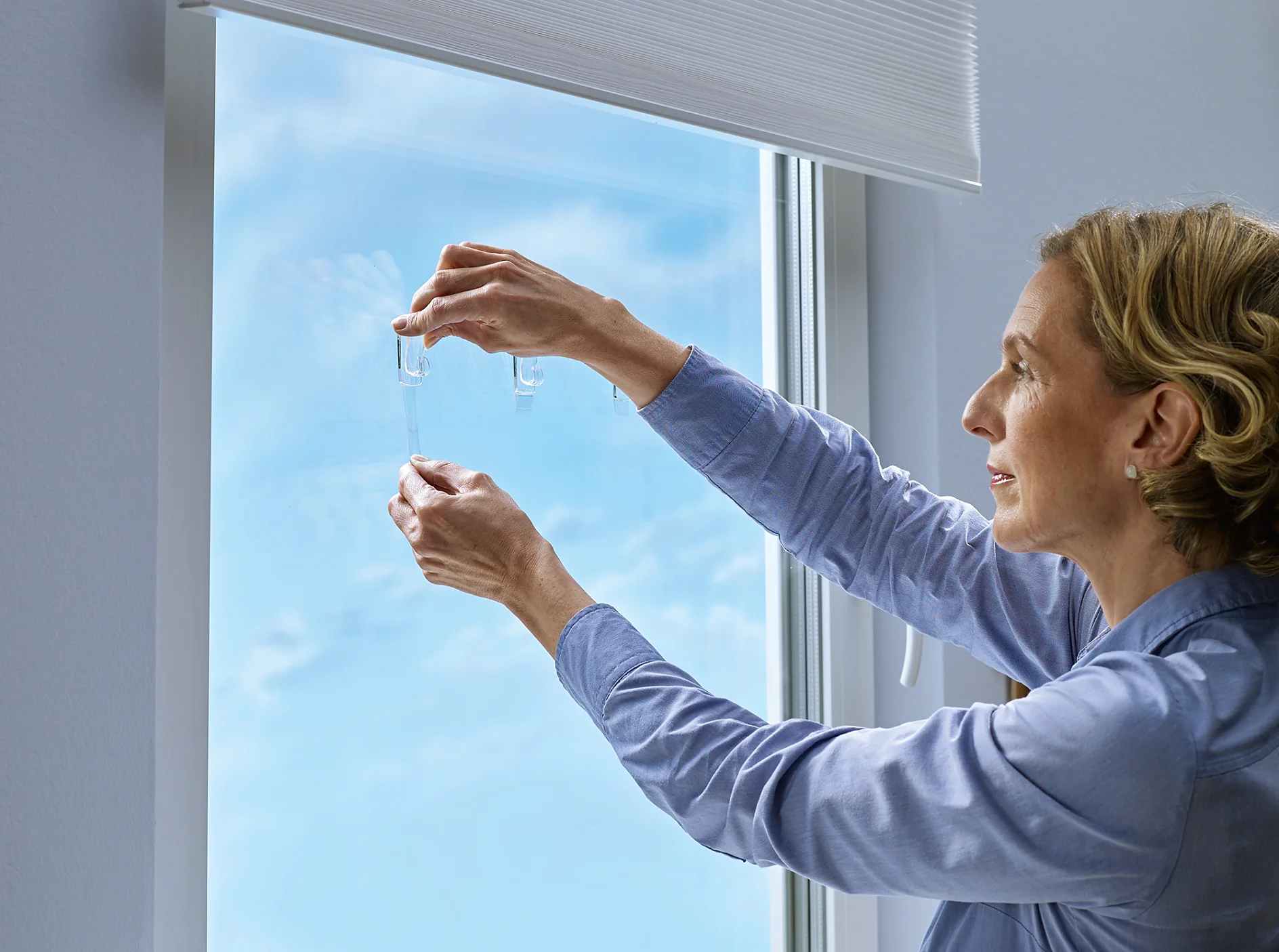01Clean the glass
Use a dust-free cloth and a little alcohol or methylated spirit to clean off any dirt or grease. You could also use detergent, but steer clear of ones with silicone in them as they’ll make the glass non-stick – even to something as sticky as an Adhesive Hook. Your surface should be dry before you start.

